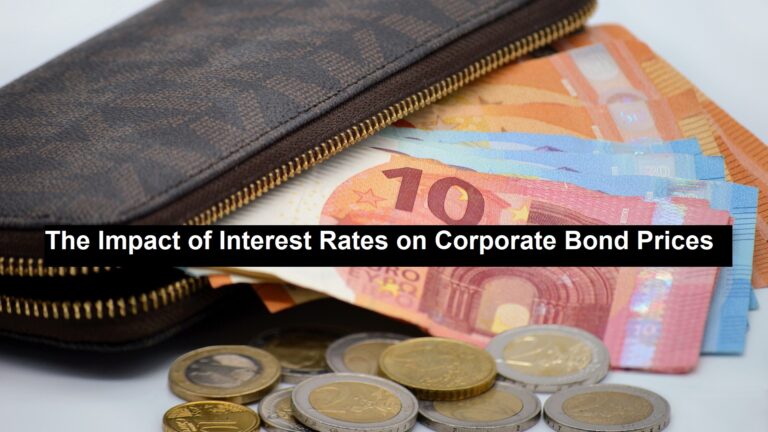Understanding the intricate relationship between interest rates and corporate bond prices is crucial for investors and finance professionals alike. Corporate bonds are a key element of the capital markets, serving as a means for companies to raise funds while providing investors with a stream of income. As interest rates fluctuate, so too do the values of these bonds, often in ways that can significantly impact investment strategies.
Understanding Corporate Bonds
Corporate bonds are debt securities issued by companies to raise capital. When an investor purchases a corporate bond, they are essentially lending money to the issuing company in exchange for periodic interest payments, known as coupon payments, and the return of the bond’s face value at maturity. Bonds come in various types, with investment-grade bonds typically rated BBB or higher, while high-yield bonds, often referred to as junk bonds, carry ratings below BBB. This distinction is crucial because it influences the risk profile and expected returns of the investment.
Key features of corporate bonds include their maturity, which is the length of time until the principal amount is repaid, and their coupon rates, which determine the interest payments made to bondholders. Additionally, credit ratings assigned by agencies like Moody’s or Standard & Poor’s reflect the creditworthiness of the issuer and can significantly influence bond pricing. A downgrade in credit rating often leads to a decline in bond prices as investors demand higher yields for increased risk. Click here now for more information.
Interest Rates Explained
Interest rates represent the cost of borrowing money and are influenced by various economic factors, including inflation, economic growth, and central bank policies. Central banks, like the Federal Reserve in the United States, play a pivotal role in setting short-term interest rates through monetary policy. They may raise rates to curb inflation or lower them to stimulate economic growth, thus impacting the broader economy, including corporate borrowing costs.
Interest rates can be categorised into nominal and real rates. Nominal interest rates are the stated rates without adjusting for inflation, while real interest rates account for inflation’s impact. Furthermore, interest rates can vary based on term length; short-term rates tend to be lower than long-term rates, reflecting the risks associated with lending money over extended periods.
The Relationship Between Interest Rates and Corporate Bond Prices
One of the fundamental principles of finance is the inverse relationship between interest rates and bond prices. When interest rates rise, existing bond prices typically fall. This is because new bonds are likely issued at these higher rates, making existing bonds with lower coupon rates less attractive. Investors will demand a discount on these existing bonds to match the new market conditions.
For example, if a company issues a bond with a 5% coupon rate and market interest rates increase to 6%, new investors would prefer the new bonds offering higher returns. Consequently, the price of the existing bond would decline, as it must be sold at a discount to provide a comparable yield. The mathematics behind this pricing involves present value calculations, where future cash flows (coupon payments and principal repayment) are discounted back to their present value using current interest rates.
Read: The Job Search Journey: Managing Expectations and Embracing Realities
Factors Affecting the Impact of Interest Rates on Corporate Bonds
The impact of interest rates on corporate bond prices is not uniform; various factors contribute to this dynamic. One critical aspect is duration, which measures a bond’s sensitivity to interest rate changes. Bonds with longer durations are generally more sensitive to interest rate fluctuations, meaning their prices will experience greater volatility in response to rate changes.
Credit risk premiums also play a significant role in this relationship. When interest rates rise, investors may perceive an increase in the risk associated with corporate bonds, particularly those of lower-rated issuers. As a result, investors might demand a higher yield to compensate for the perceived increase in risk, further impacting bond prices.
Strategies for Investors
In navigating the relationship between interest rates and corporate bond prices, investors must adopt strategies to manage interest rate risk effectively. One approach is diversification, which involves spreading investments across various sectors and bond maturities to mitigate potential losses from rate fluctuations. Additionally, investors might employ duration matching, aligning their bond portfolio’s average duration with their investment horizon to reduce sensitivity to interest rate changes.
Timing investments based on interest rate trends can also yield significant advantages. By analysing economic indicators such as inflation rates, employment figures, and central bank communications, investors can better position themselves to capitalise on interest rate movements.
Conclusion
The relationship between interest rates and corporate bond prices is a vital area of study for investors seeking to optimise their portfolios. As interest rates fluctuate, understanding the mechanics of how these changes affect bond pricing becomes crucial. From the inverse relationship that defines this connection to the broader economic factors at play, a comprehensive grasp of these dynamics will empower investors to make informed decisions. In an ever-changing economic environment, the ability to analyse and anticipate these trends will remain a cornerstone of successful investing in corporate bonds.




